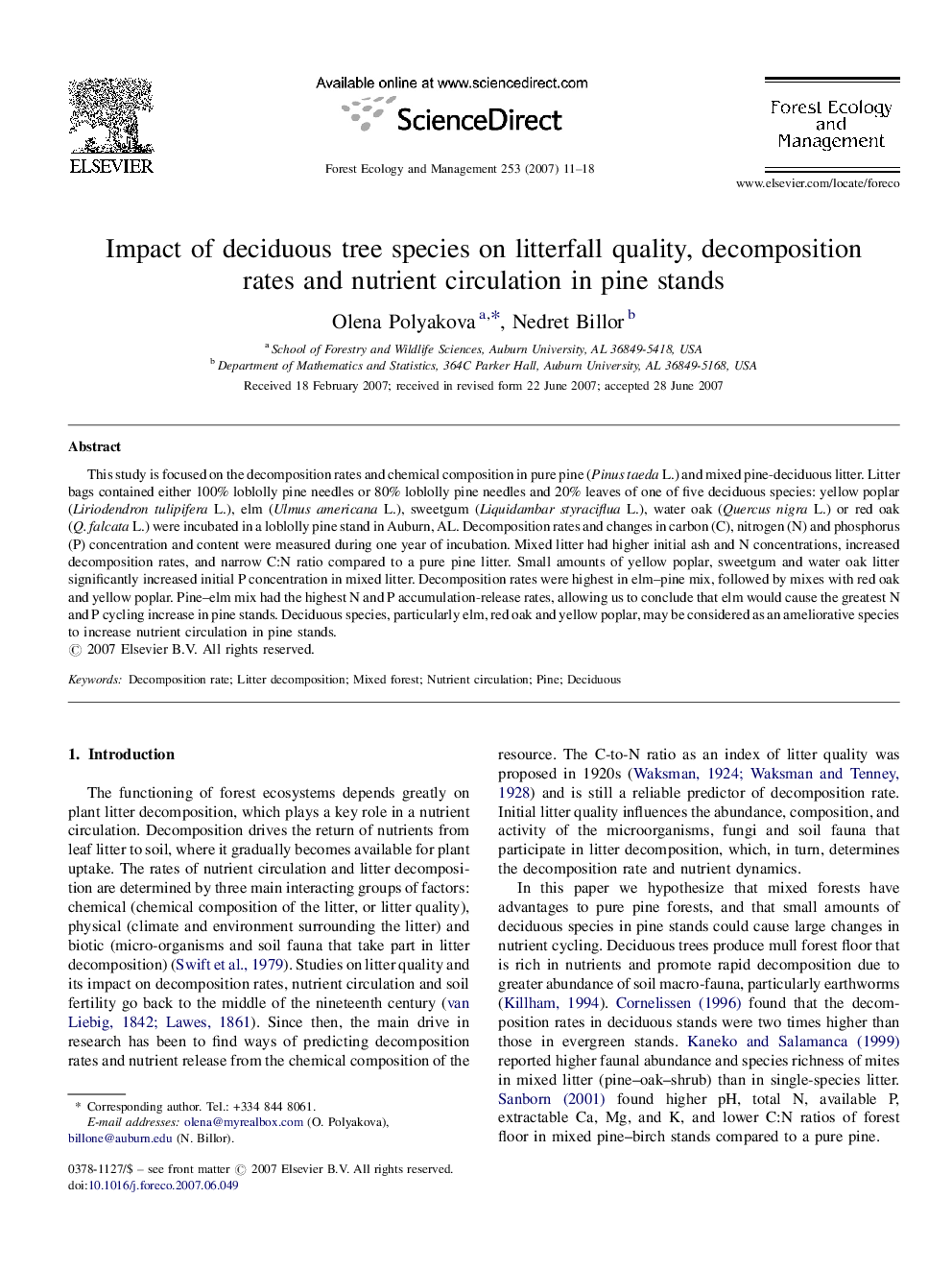| Article ID | Journal | Published Year | Pages | File Type |
|---|---|---|---|---|
| 89731 | Forest Ecology and Management | 2007 | 8 Pages |
This study is focused on the decomposition rates and chemical composition in pure pine (Pinus taeda L.) and mixed pine-deciduous litter. Litter bags contained either 100% loblolly pine needles or 80% loblolly pine needles and 20% leaves of one of five deciduous species: yellow poplar (Liriodendron tulipifera L.), elm (Ulmus americana L.), sweetgum (Liquidambar styraciflua L.), water oak (Quercus nigra L.) or red oak (Q. falcata L.) were incubated in a loblolly pine stand in Auburn, AL. Decomposition rates and changes in carbon (C), nitrogen (N) and phosphorus (P) concentration and content were measured during one year of incubation. Mixed litter had higher initial ash and N concentrations, increased decomposition rates, and narrow C:N ratio compared to a pure pine litter. Small amounts of yellow poplar, sweetgum and water oak litter significantly increased initial P concentration in mixed litter. Decomposition rates were highest in elm–pine mix, followed by mixes with red oak and yellow poplar. Pine–elm mix had the highest N and P accumulation-release rates, allowing us to conclude that elm would cause the greatest N and P cycling increase in pine stands. Deciduous species, particularly elm, red oak and yellow poplar, may be considered as an ameliorative species to increase nutrient circulation in pine stands.
